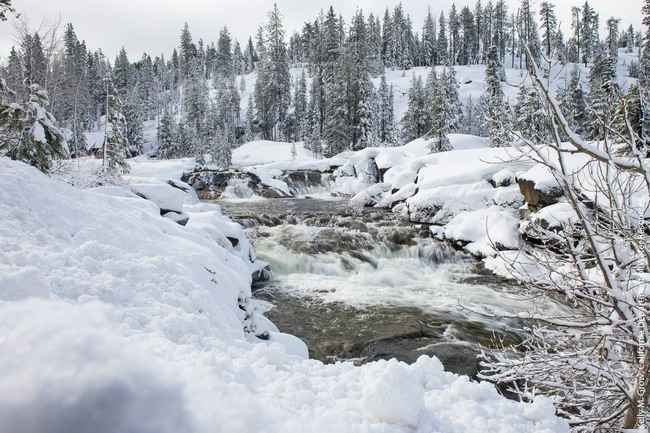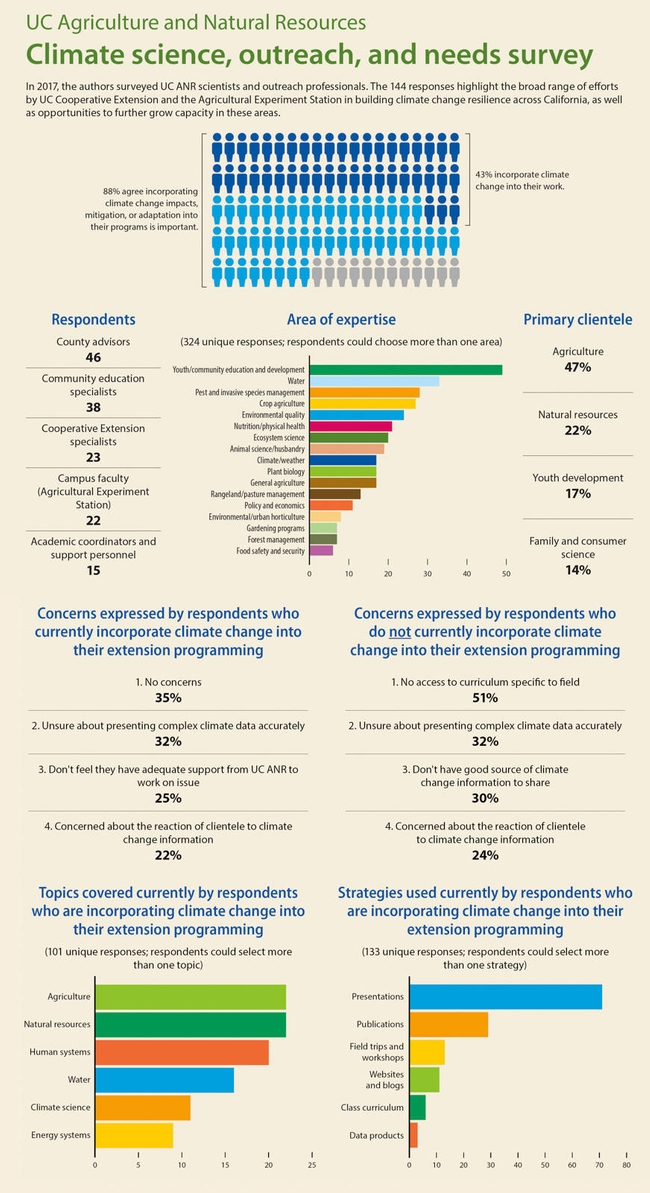Posts Tagged: Leslie Roche
Building climate change into the work of UCANR
UC Cooperative Extension researchers convey need for more climate change communication and curriculum tools
Reducing greenhouse gas emissions from natural and working lands is one of California's key climate change strategies. In particular, the potential for farm and rangeland soils to serve as carbon sinks has been getting a lot of attention lately in the national media — and during California Healthy Soils week, which wrapped up Dec. 7.
These are areas where UC Cooperative Extension, with its local presence across the state, is well-positioned to drive change. But as a recent survey of UCCE advisors, specialists and faculty found, while there is a good deal of climate work happening, there are also some significant obstacles.
The survey results — reported in an article by UCCE academics Ted Grantham, Faith Kearns, Susie Kocher, Leslie Roche and Tapan Pathak in the latest issue of California Agriculture — showed that while nearly 90 percent of respondents believe it is important to incorporate climate science into extension programming, only 43 percent currently do so.
Respondents pointed to a number of issues. One was "limited familiarity with climate science fundamentals." It's one thing to cite the overwhelming scientific consensus that climate change is real and is being driven largely by human activity; it is another to be able to respond quickly and convincingly to detailed questions from doubters. This list from Grist, for instance, details more than 100 common arguments raised by climate skeptics, many of which have non-trivially complex answers.
Another important issue cited by respondents was "fear of alienating clientele by talking about a contentious topic," a response that highlights the importance of personal relationships in UCCE's work, and the challenge of communicating an area of science that is highly politicized.
The authors conclude: "To further increase the capacity of UC ANR staff to support the needs of their clientele and the broader public, professional development around climate science fundamentals, communication, and adaptation strategies is critical." As an initial follow-up, the UCANR climate change program team (led by authors Grantham, Kocher and Pathak) is presenting a workshop and professional development meeting for extension professionals in February.
For more from California Agriculture, the research journal of UCANR, see the full issue with articles on mapping soil salinity in the San Joaquin Valley via satellite; choosing forage seed mixes for rangeland restoration; growing oilseeds in winter without irrigation; keeping dairy cows cool in the summer; breeding better carrots; and more.
Ranching and California's drought: A workshop & webcast
These concerns and more are being discussed at an upcoming meeting called “Ranching and California's Drought” a public workshop and webinar to be held on the UC Davis campus Nov. 7 and broadcast at local satellite locations throughout the state.
Drought experts from a range of organizations will open the dialogue with ranchers, to discuss the science and the policies of how drought is declared and mapped in California. UC Davis researcher Leslie Roche will present new insights from an extensive study, having surveyed and interviewed ranchers throughout the state. Other topics include new feeding strategies, how ranchers can qualify for drought relief assistance and a seasonal forecast from the state climatologist. The workshop will be a learning opportunity for researchers as well.
“There are impacts of drought on a ranch that these models are blind to or just can't integrate,” says UC Davis Cooperative Extension specialist Ken Tate, one of the meeting organizers. “But these things need to be integrated into policy.”
As an example, he explains how late April showers in northern California gave this year's totals a deceptively positive review: “It may not look like that big of a drought on the annual forage production basis, when in reality it was horrendous in December and January,” he says. “April rain and forage were too late to save the day.”
The forum will allow Drought Monitor experts to better integrate local knowledge into their analysis and decision making, Tate says, adding: “They're really open and really interested in having these conversations.”




